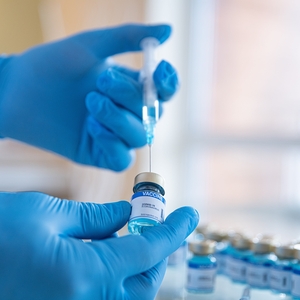Consider Playing By This Book's Rules: FDA-MITRE Cybersecurity Guidance
ABSTRACT: In an October 1, 2018 statement issued from FDA Commissioner Scott Gottlieb, M.D., the FDA not only announced its efforts to strengthen its medical device cybersecurity program, but also unveiled its collaborative effort with MITRE, producing a cybersecurity "playbook" in order to assist entities in preparing for and responding to cybersecurity attacks.
As part of Cybersecurity Awareness Month, we continue our discussion about the FDA’s efforts to help prepare various entities to address cybersecurity threats, vulnerabilities, and even attacks. In our previous post, we previewed the FDA and MITRE’s cybersecurity Regional Incident Preparedness and Response Playbook (the “playbook”) for health care delivery organizations. Here, we take a more in depth look into what that playbook has to offer.
The playbook’s focus is primarily aimed at preparing Health Care Delivery Organizations (“HDOs”), including their stay, for addressing and responding to cybersecurity threats. The playbook is not intended to address the day-to-day patch management of devices, but rather addresses threats and vulnerabilities for large-scale, multi-patient impact and patient safety concerns.
The playbook’s guidance primarily consists of four guiding steps, going in chronological order: (1) preparation, (2) detection and analysis, (3) containment eradication and recovery, and (4) post-incident activity. Below is a summary of these action steps, but you are encouraged to read the actual playbook for a more in-depth explanation and/or expansion on the summary below.
(1) PREPARATION
Assess and bolster cyber defensive measures and develop handling process and procedures to enable better operations when an incident arises.
Suggested Steps:
1. Incorporate cybersecurity awareness into medical device procurement in order to strengthen the response to a cybersecurity incident. (E.g. Request a Software Bill of Materials to identify and address vulnerable device components.)
2. Take a medical device asset inventory. (E.g. Identify device name and description, physical location of device, device owner and manager.)
3. Perform a hazard vulnerability analysis to assess and identify potential gaps in emergency planning, including a review as anticipated cybersecurity threats and existing mitigations. (E.g. Identify potential cybersecurity risks, such as lack of staff with the ability to detect and respond to a cybersecurity incident.)
4. Prepare medical technical specialists (i.e. the response team to all hazard incidents) with cybersecurity and medical device expertise as part of the hospital incident management team.
5. Create an Emergency Operation Plan to determine how the HDO will “respond to and recover from a threat, hazard, or other incident” with a device. (E.g. Identify members and their roles and responsibilities.)
6. Create an overall Incident Response communication plan (E.g. Identity key internal and external communication roles.)
a. Specify incident-sharing expectations for all participants in the above communication plan. (E.g. What incidents can and cannot be shared?)
b. Identify cybersecurity incidents, initiate outreach to manufacturer and then to broader healthcare community.
c. Implement external incident notification and continue to stay abreast of intrusion information and/or mitigation recommendations from manufacturer(s).
d. Create a communication template for how incident notification will occur and how.
7. Implement user awareness training with all medical device users in your company and conduct preparedness and response exercises for all-hazards.
(2) DETECTION AND ANALYSIS
Identify and establish that an incident has occurred.
Suggested Steps:
1. Define the priority of and appropriate level of response to incidents.
2. Implement formal and informal reporting obligations (Note: Manufacturers are required to conduct a formal notification of the incident to its customers and user community.)
3. The incident investigation and analysis can begin once initial incident parameters have been set.
4. All activities taken to address cybersecurity incidents and responses must be recorded or otherwise documented. Benefits of recording these activities include preserving evidence for potential criminal activity and learning to improve the response for the future.
(3) CONTAINMENT ERADICATION AND RECOVERY
Response to the confirmed cybersecurity incident begins. Such activities could include a strategy of “contain, clear, and deny” (i.e. halt cybersecurity incident, fix it and restore services quickly) or a “monitor and record” strategy (i.e. watch and “capture” adversary actions).
(4) POST-INCIDENT ACTIVITY
Identify what went well and what did not; such information can be leveraged to improve existing plan and future response. It is also suggested to retain a trained, digital forensics expert to fully identify the damage done.
For immediate, additional information about addressing cybersecurity breaches in medical devices, consider visiting the Baker Sterchi blog posts below addressing cybersecurity:
- Summary of FDA’s 10.1.18 Announcement.
- Three-part series on addressing cybersecurity breaches in medical devices: Part I, Part II, Part III.
- Four-part series addressing postmarket management of cybersecurity in medical devices: Part I, Part II, Part III, Part IV.
related services

All Claims Means ALL: The PREP Act Provides Immunity in COVID-19 Vaccination Case ...

Jackson County, Missouri Jury Rejects 3M Surgical Blanket Infection Claims ...
About Drug / Device Law Blog
Baker Sterchi's Drug / Device Law Blog examines topics and legal developments of interest to the drug and device industry. Learn more about the editor, Paul Penticuff, and our Drug and Device practice.
Subscribe via email
Subscribe to rss feeds
RSS FeedsABOUT baker sterchi blogs
Baker Sterchi Cowden & Rice LLC (Baker Sterchi) publishes this website as a service to our clients, colleagues and others, for informational purposes only. These materials are not intended to create an attorney-client relationship, and are not a substitute for sound legal advice. You should not base any action or lack of action on any information included in our website, without first seeking appropriate legal or other professional advice. If you contact us through our website or via email, no attorney-client relationship is created, and no confidential information should be transmitted. Communication with Baker Sterchi by e-mail or other transmissions over the Internet may not be secure, and you should not send confidential electronic messages that are not adequately encrypted.
The hiring of an attorney is an important decision, which should not be based solely on information appearing on our website. To the extent our website has provided links to other Internet resources, those links are not under our control, and we are not responsible for their content. We do our best to provide you current, accurate information; however, we cannot guarantee that this information is the most current, correct or complete. In addition, you should not take this information as a promise or indication of future results.
Disclaimer
The Drug / Device Law Blog is made available by Baker Sterchi Cowden & Rice LLC for educational purposes only as well as to give you general information and a general understanding of the law, not to provide specific legal advice. Your use of this blog site alone creates no attorney client relationship between you and the firm.
Confidential information
Do not include confidential information in comments or other feedback or messages related to the Drug / Device Law Blog, as these are neither confidential nor secure methods of communicating with attorneys. The Drug / Device Law Blog should not be used as a substitute for competent legal advice from a licensed professional attorney in your state.











